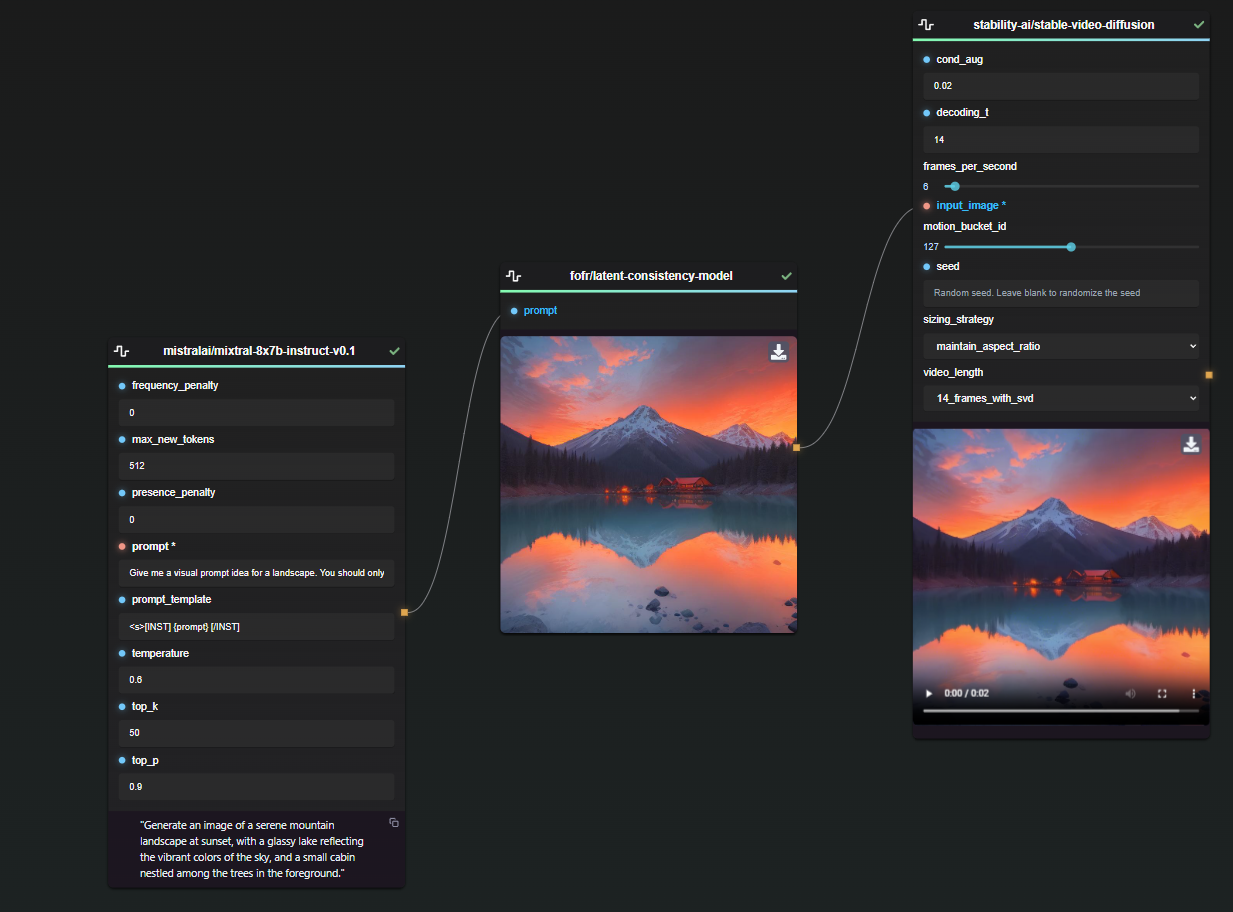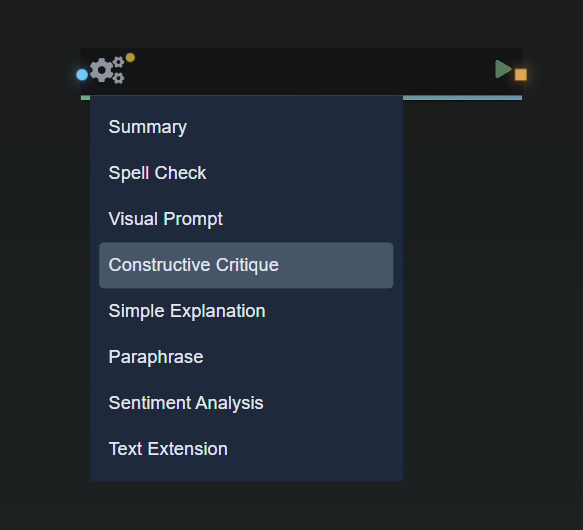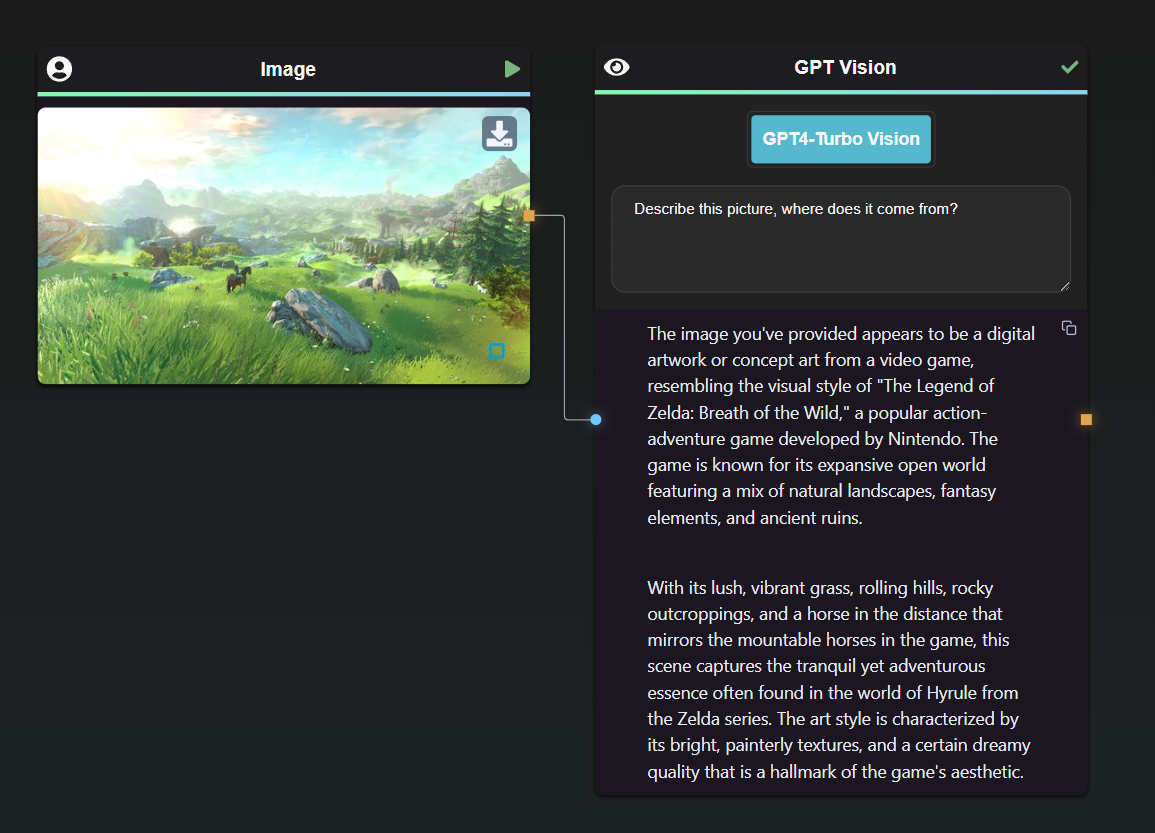Open-source tool to seamlessly connect multiple AI model APIs in repeatable flow.
🚀 New Replicate Node | ✨ Access to a lot of open-source models
(LLama, Mistral, Face Swap, MusicGen, ...)
🌟 New Edge Type Button | 🎵 Support for audio output
AI Flow is an open source, user-friendly UI application that empowers you to seamlessly connect multiple AI models together, specifically leveraging the capabilities of multiples AI APIs such as OpenAI, StabilityAI and Replicate.
In a nutshell, AI Flow provides a visual platform for crafting and managing AI-driven workflows, thereby facilitating diverse and dynamic AI interactions.
- 🎨 It offers a drag-and-drop interface to design these workflows
- 📊 Monitors their execution in real-time
- 🚀 Nodes are launched in parallel whenever possible
- 🗂️ AI models can be conveniently managed and organized
- 💾 Workflows can be exported or imported for sharing or backup purposes
LLaMA, Mistral, Stable Video Diffusion, Music-gen, and many more.
When your flow is complete, you have the option to run it as is or create a custom layout focusing on the most interesting parts.
Here is an example of layout :
For a quick local setup, grab the .exe from the repository's releases section.
You'll need to update the REPLICATE_API_KEY in the .env file to use the Replicate Node. This API key is used exclusively for fetching model data.
Before getting started, make sure you have the following dependencies installed on your system:
- Clone the repository:
git clone https://github.com/DahnM20/ai-flow.git - Change to the project directory:
cd ai-flow
- Go to the UI directory:
cd packages/ui - Install dependencies:
npm install
- Go to the backend directory:
cd packages/backend - Install Python dependencies:
poetry install
- Launch poetry shell :
poetry shell - Install the windows requirements in the poetry shell :
pip install -r requirements_windows.txt
You'll need to update the REPLICATE_API_KEY in the .env file to use the Replicate Node. This API key is used exclusively for fetching model data.
- Start the backend server:
cd backend && poetry run python server.py - Start the ui application:
cd ui && npm start - Open your browser and navigate to
http://localhost:3000 - Use the drag-and-drop interface to design your AI workflow
- Connect AI models and define data flow between them
- Click "Run" to execute the AI workflow
- Monitor the execution progress and results in real-time
- Go to the docker directory:
cd ./docker - You'll need to update the REPLICATE_API_KEY in the .yml file to use the Replicate Node. This API key is used exclusively for fetching model data.
- Launch
docker-compose upordocker-compose up -d - Open your browser and navigate to
http://localhost:80 - Use
docker-compose stopwhen you want to stop the app.
Contributions are welcome! If you find any issues or have suggestions for improvement, please open an issue or submit a pull request.
This project is licensed under the MIT License. See the LICENSE file for more details.












